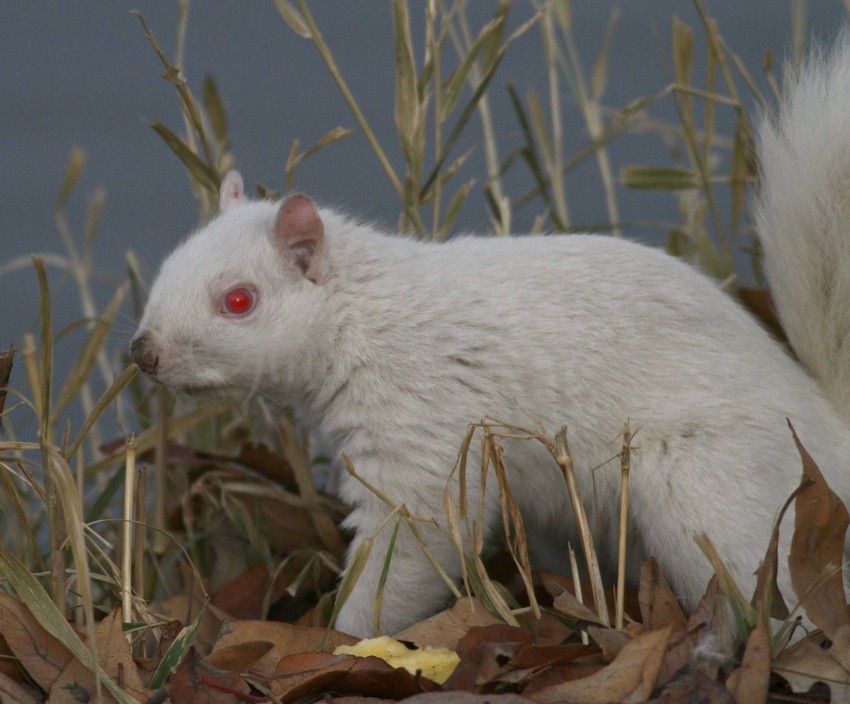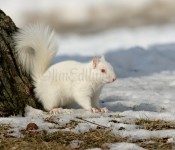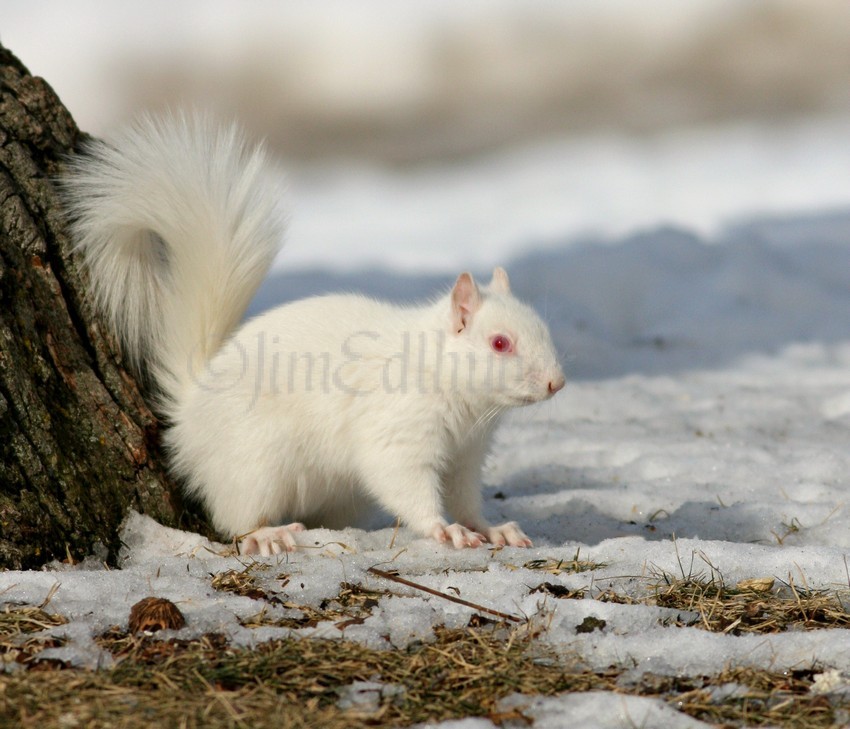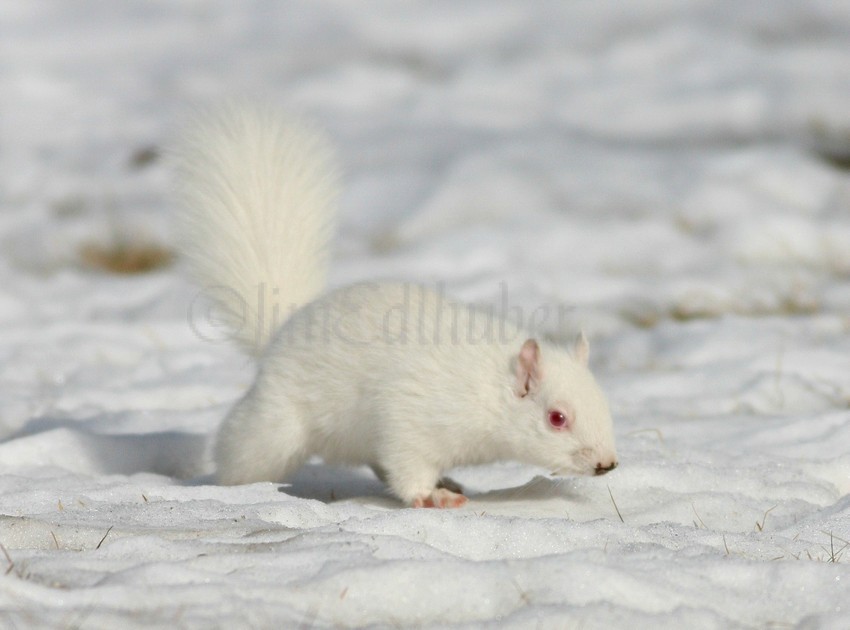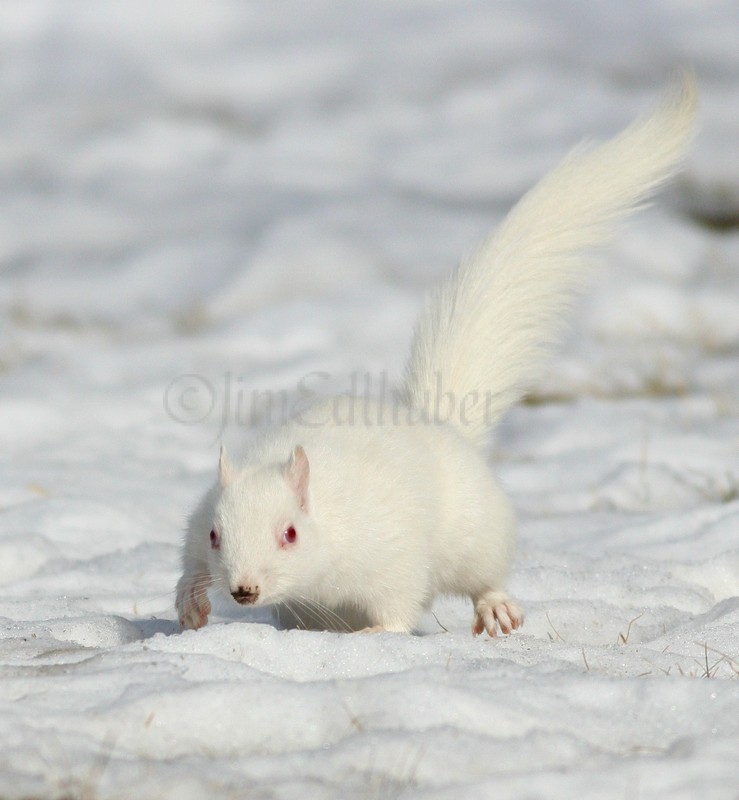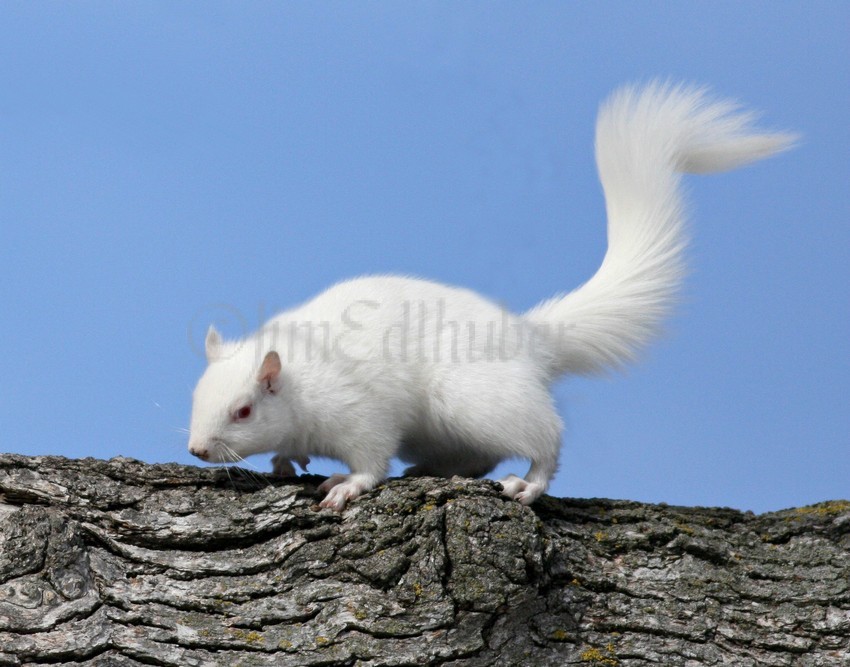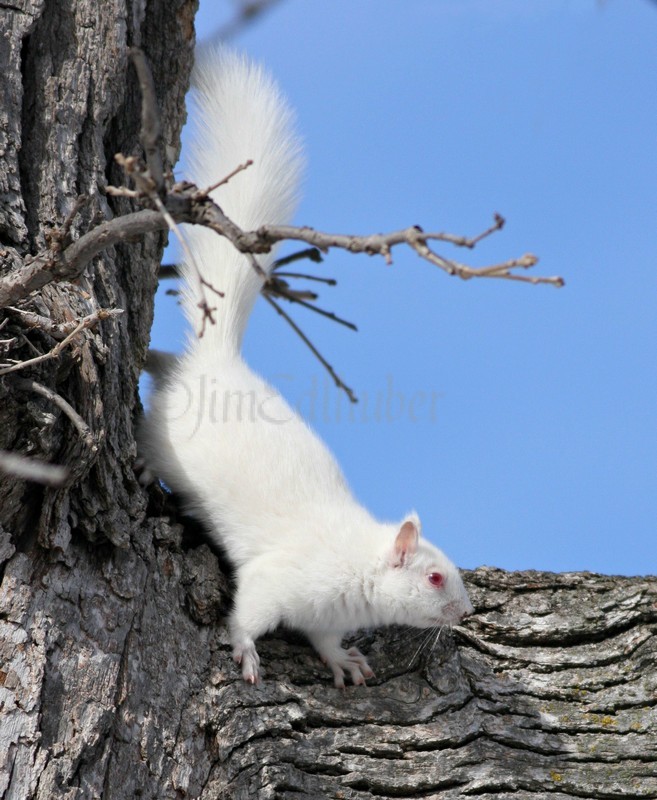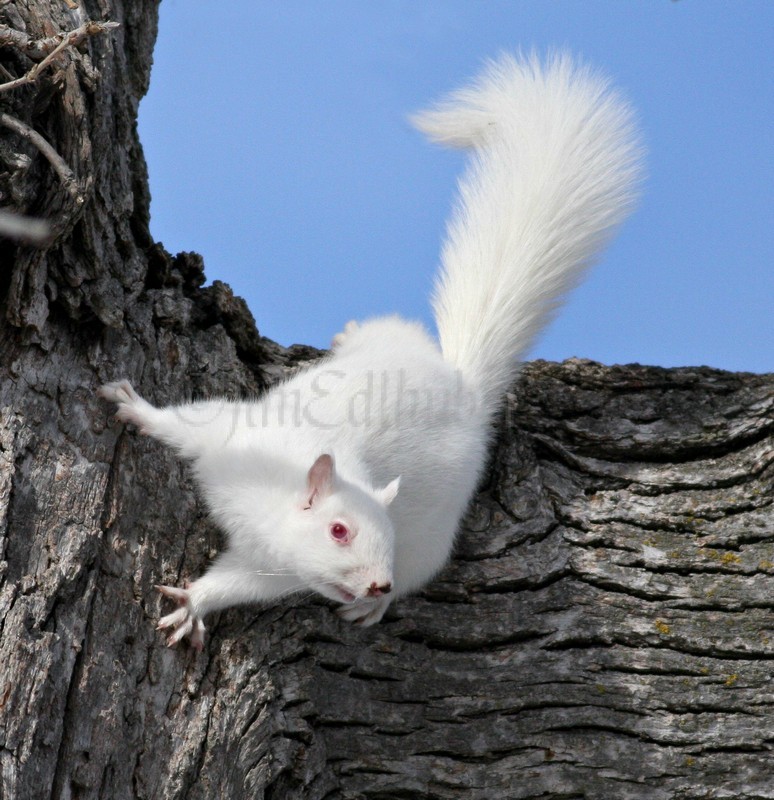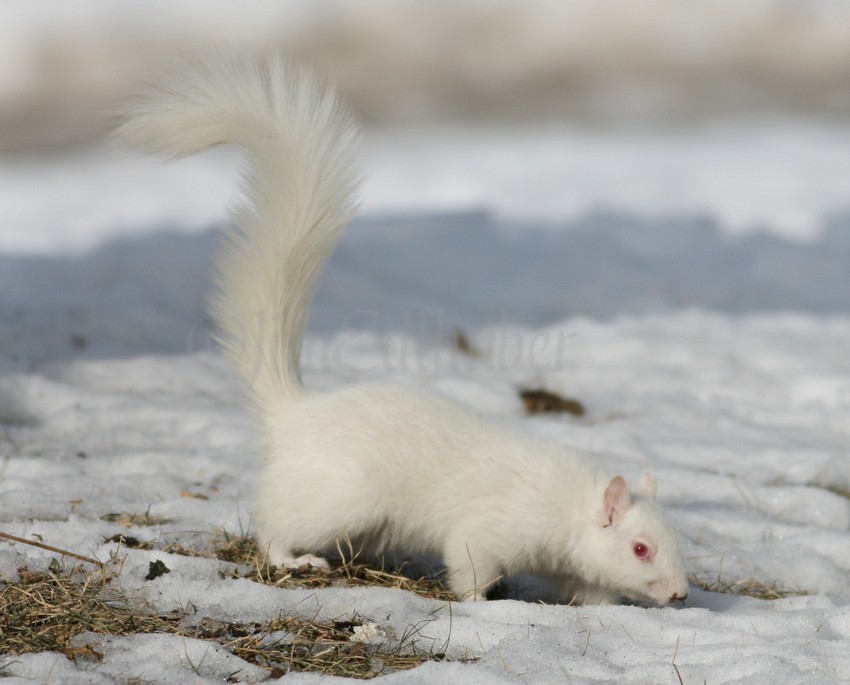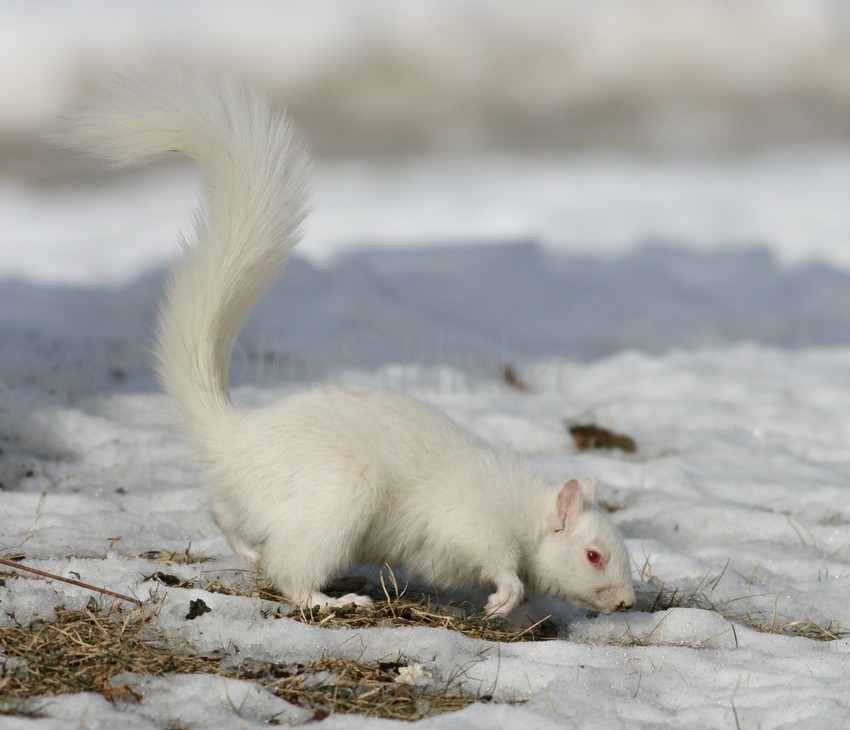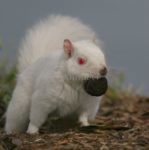
Albino Squirrels are not common at all so I took advantage of getting some images of one of two in Waukesha County when I had the opportunity. They are storing nuts for the winter and working on a nest too. I was a pretty nice morning with some sun, mild temps and low winds. Images were taken on November 20, 2019.
Albino Eastern Gray Squirrel
Scientific name: Sciurus carolinensis
Type: Mammal
Albino: Albinism, is a mutation on a gene that codes for pigmentation. Eyes are red in color on albino mammals.
Habitat: They prefer large areas of mature and dense woodlands.
Average life span in the wild: Adults can live to 6 years. Records that have been keep they may survive much longer.
Size: Bodies run 9.1″ to 11.8″ long plus the tail, tails averaging about 8″-10″ long.
Weight: 14-21 oz
Diet: Tree berries, buds, bark, nuts, acorns and seeds. They are also known to eat seeds at bird feeders and vegetables from gardens.
Range: Midwest to the eastern US and southeastern Canada.
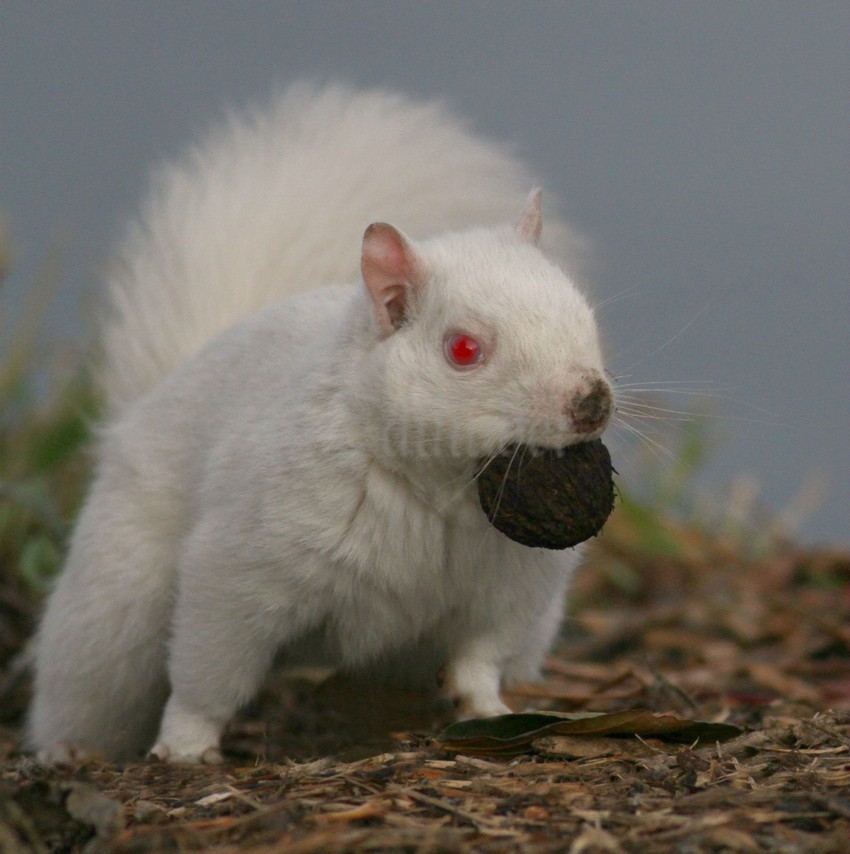
What a beautiful squirrel running with a Walnut!
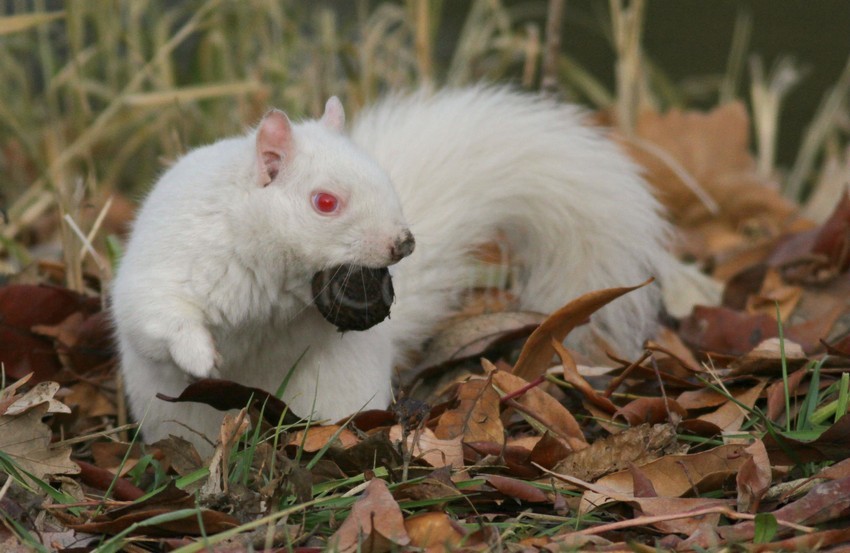
Thinking here on where to bury this nut…
